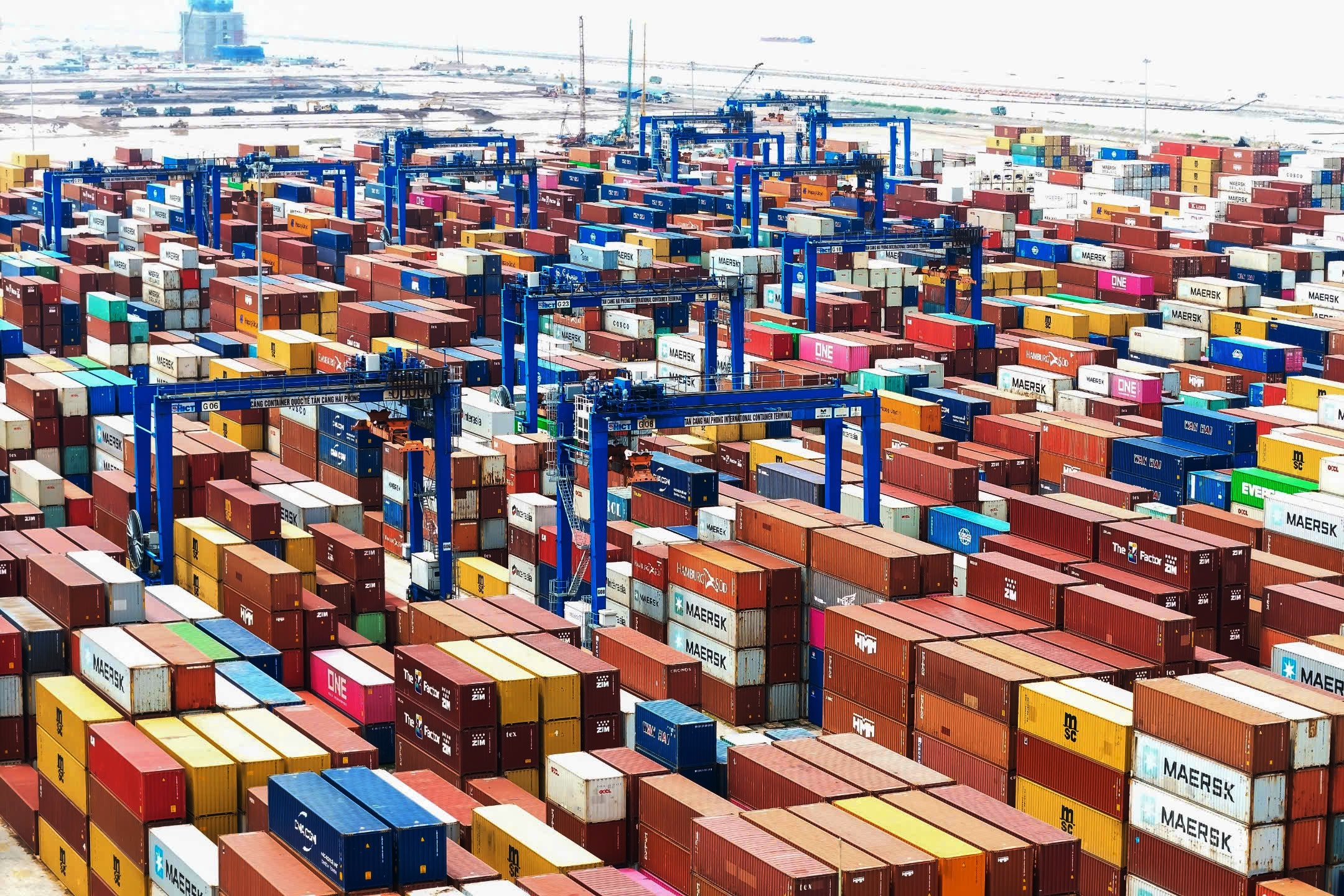Following the July regular government meeting, Vietnam’s government has directed the Ministry of Finance, along with the Ministry of Industry and Trade and the State Bank of Vietnam, to develop a comprehensive response to US tariff policies. The plan is due by 13/8.
The Ministry of Industry and Trade will continue trade negotiations with the US and finalize a decree on strategic trade control for government approval by 17/8.
This Ministry, in collaboration with the Ministries of Finance, Health, Public Security, and National Defense, is also tasked with developing a plan to combat smuggling, trade fraud, and counterfeit goods, particularly concerning milk, pharmaceuticals, and food products.
 |
Lach Huyen Port Complex, Hai Phong. Photo: Le Tan |
Lach Huyen Port Complex, Hai Phong. Photo: Le Tan
These directives follow the implementation of US retaliatory tariffs on trading partners, ranging from 10% to 41%, effective 1/8. The tariff on Vietnamese goods is 20%, down from the 46% announced in April.
According to US Customs data, two-way trade between the two countries reached 149.7 billion USD in 2024, with Vietnam exporting 136.6 billion USD and importing 13.1 billion USD. Vietnam's trade surplus with the US was 123.5 billion USD, ranking third behind China and Mexico.
In the first 5 months of this year, Vietnam-US trade reached 77.4 billion USD, a 36.5% increase compared to the same period in 2024. Vietnam's exports totaled 71.7 billion USD and imports 5.7 billion USD, representing increases of 37.3% and 30.7%, respectively.
In addition to the response plan, the government has instructed ministries, local authorities, and industry sectors to expand and diversify markets and supply chains, particularly for key export commodities. They are also directed to enhance trade promotion, connect supply and demand, and support businesses in adapting to new export market standards.
The Ministries of Industry and Trade, Health, Agriculture and Rural Development, and Finance will strengthen food safety management, traceability, and agricultural product quality control from harvest onward. They are to promptly resolve any outstanding issues related to import and export regulations and conditions raised by businesses and associations.
The government aims for 8.3-8.5% GDP growth this year, laying the foundation for double-digit growth in the coming period. To achieve this, ministries and localities are tasked with boosting industrial and agricultural production, particularly in manufacturing, electricity generation and distribution, and restoring production in disaster-affected areas. They must also resolve any project difficulties and obstacles identified in inspections and audits by 20/9.
The Ministry of Industry and Trade is responsible for ensuring a stable electricity supply, effectively implementing the adjusted Power Development Plan VIII, and proposing amendments to regulations on direct power purchase agreements, renewable energy, and self-generation and self-consumption. The government also requires this ministry to closely monitor the market and ensure a stable fuel supply in the final months of the year.
The Ministry of Agriculture and Rural Development, along with relevant parties, is to resolve all outstanding issues related to mining permits by August.
Phuong Dung












